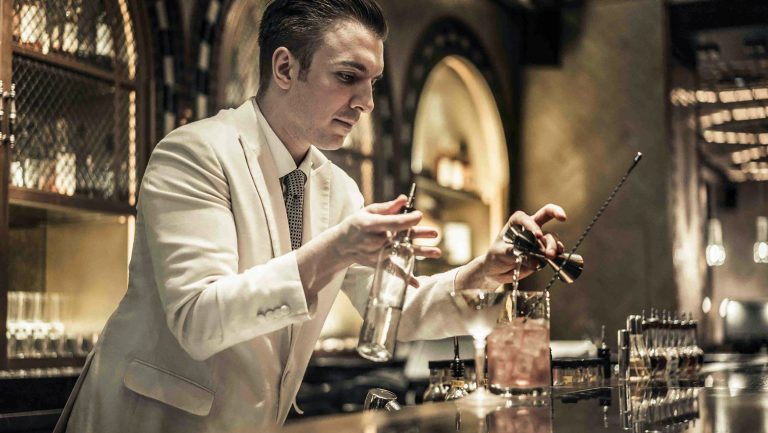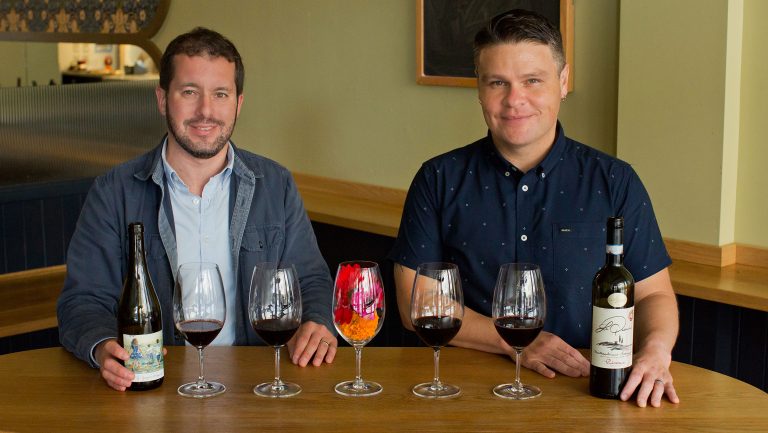Bartender Chris Lowder is well versed in the challenges of seamless, efficient bar management. Lowder, previously head bartender of the Four Seasons Hotel in Seoul, now works in Shanghai in a training capacity for Proof & Company, a supplier that focuses on bar education and representing craft spirits in new markets. Here, he shares his insights on why batching and bottling is beneficial and how to properly pull it off.
Our ethos at Proof & Company is to elevate the standard of drinking in our markets, and my main role is to help bars, restaurants, and hotels design new bar programs, help them run systems, and train and educate their staff to become better bartenders.
Batching plays a crucial role in all of the above. Preparing cocktail ingredients in bulk ahead of time doesn’t only reduce the amount of time it takes to deliver a drink to a guest, it can also lower a bar’s overhead by making more use of junior staff, allowing managers to prioritize their time more efficiently, and ultimately working in favor of a bar’s nightly bottom line.

Don’t miss the latest drinks industry news and insights. Sign up for our award-winning newsletters and get insider intel, resources, and trends delivered to your inbox every week.
For example, if batching a cocktail nicks 30 seconds off of the drink’s turnaround time, and that drink is made 50 times in one night, then a single bartender is saving 25 minutes of time. When you consider a bartender might make $15 of revenue every three minutes, and they save 25 minutes, then each bartender is bringing in an additional revenue of approximately $125 per night.
Batching is not necessarily an intuitive part of bartending, but it is a very necessary part of efficient bartending. Here are five reasons why I recommend batching.
1. For private events, it’s a no-brainer.
When it comes to cocktail events, you have a real benefit, because you have a 100-percent consistent cocktail that is made exactly the same way all night. This means you can put your more junior staff on that event and not worry about consistency. This lowers your overhead, and if your cocktail is batched, it means you can have less training time, you are less concerned about staff turnover, and as a manager, you are able to more effectively manage a multi-venue bar.
2. It allows managers to triage their time.
As a manager, you really want to spend your time in the high-volume cocktail bar. You usually see equal or greater revenues from a private event as compared to a regular service, but you want to spend less of your time there. So if you can streamline that service and walk away, and manage the more difficult, thought-intensive, labor-intensive, and training-intensive service, that’s a huge win.
3. It makes you more organized.
To batch properly, you must have a system in place. Especially because, once batching becomes scalable, then mistakes also become scalable. So, you need to be absolutely certain that you have the best possible systems to eliminate mistakes before they happen. It’s a lot of Excel. I have countless Excel spreadsheets that turned into batching charts that turned into clear recipe guidelines.
4. It improves quality control.
Accountability is key. Having a dedicated recipe person making the cocktail batches every day minimizes the opportunity for mistakes. Then you can have your head bartender go to the kitchen, taste all of the batches, make sure everything is delicious, and sign off on them. That way, you have an effective quality control system in place, but your employee with the really well-trained palate only has to spend 30 seconds actively quality-controlling. It’s a good way to hold people accountable.
5. Even batching a few drinks makes a big difference—both to staff and to the guest.
If you take your three highest-selling cocktails and batch them without citrus, so you have a shelf-stable batch, you turn a seven-bottle drink into a three-bottle drink for your three most popular cocktails. Your three most popular cocktails are usually 60 to 80 percent of your sales. If you can make those three drinks very easily, you give your bartenders an opportunity to think less about what goes in the glass and more about the person drinking it. Your bartenders are going to have their heads up and can be telling stories, creating moments, noticing nuances about their guests, and expending more mental energy focusing on the guest experience.
There’s just one caveat: Beware of too much efficiency. Unless it’s an event, I try to never fully batch a cocktail, so that I’m still pouring two to three bottles when building the drink. There are two dangers in batching. One is that your mistakes are scalable. The second is that you lose some of the theater of drinks-making. If a guest pays $15 for a cocktail and they see you just pour from one bottle into a glass, it’s a little deflating. So, you want to batch drinks that are popular, but preserve an element of theater, whether that’s a theatrical garnish or a shaken cocktail. I would advise to not fully batch if it’s a stirred cocktail and everything’s going into one bottle. That’s boring to watch.
If you must fully bottle, make it memorable. Think about a fully bottled Manhattan in a soda bottle with a very attractive custom-made sticker or a label that’s handwritten and tied with twine. Maybe the guest has their own bottle-opener, maybe you’re monogramming the ice so that the ice is really beautiful—there are a lot of places you can add a ‘wow’ factor there. Just make sure you seize the opportunity.
— As told to Gray Chapman

Dispatch
Sign up for our award-winning newsletter
Don’t miss the latest drinks industry news and insights—delivered to your inbox every week.
Chris Lowder is a spirits evangelist with Proof & Company, a supplier that represents craft spirits in new markets. Previously, he was head bartender of the Four Seasons Hotel in Seoul, where he oversaw the property’s award-winning Charles H bar. He is also the author of “Lowder’s Easy List of 178 (Modern) Classics to Know,” a cocktail recipe guide that has been re-shared more than 1,000 times on social media since he self-published it last year.







